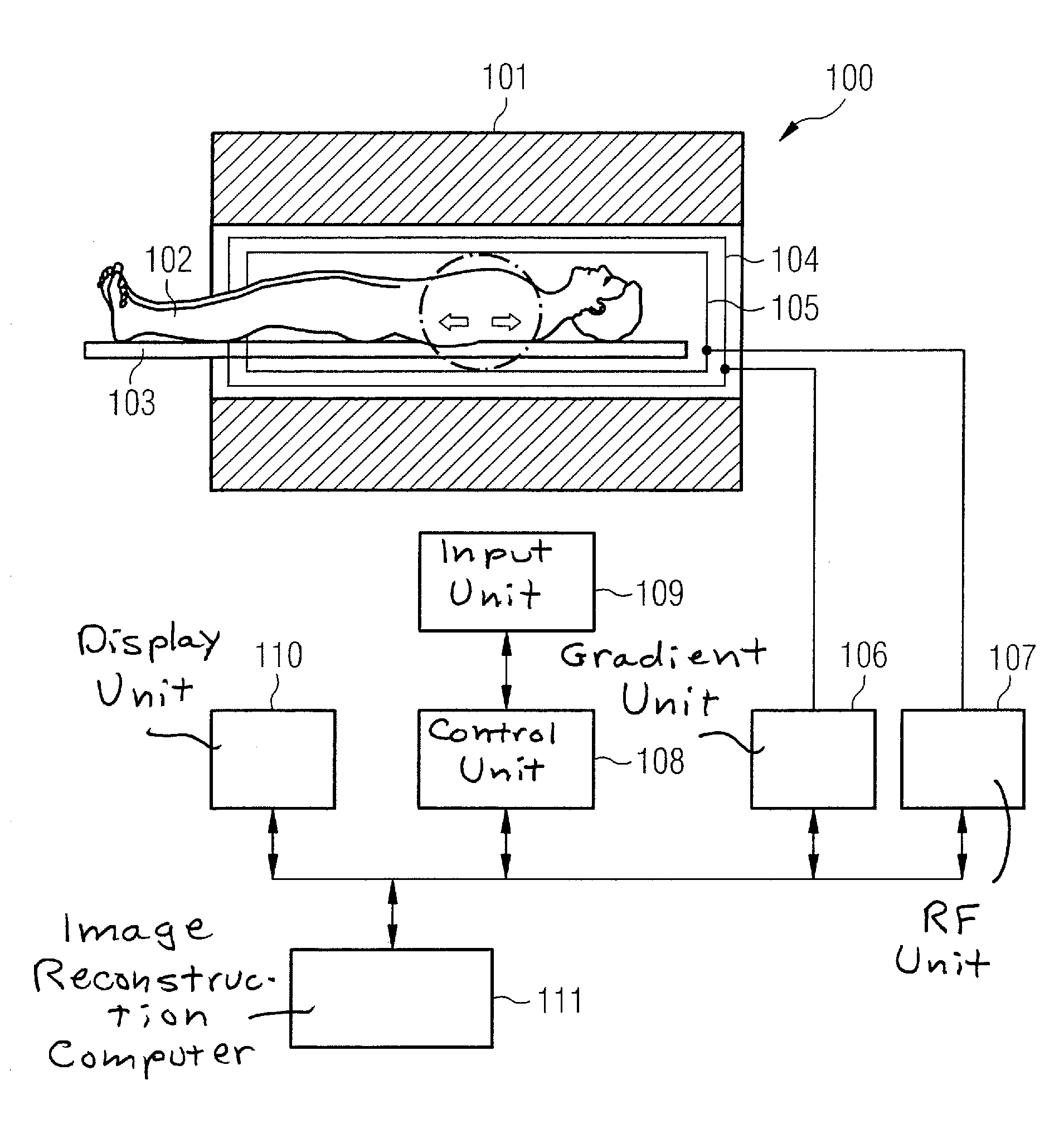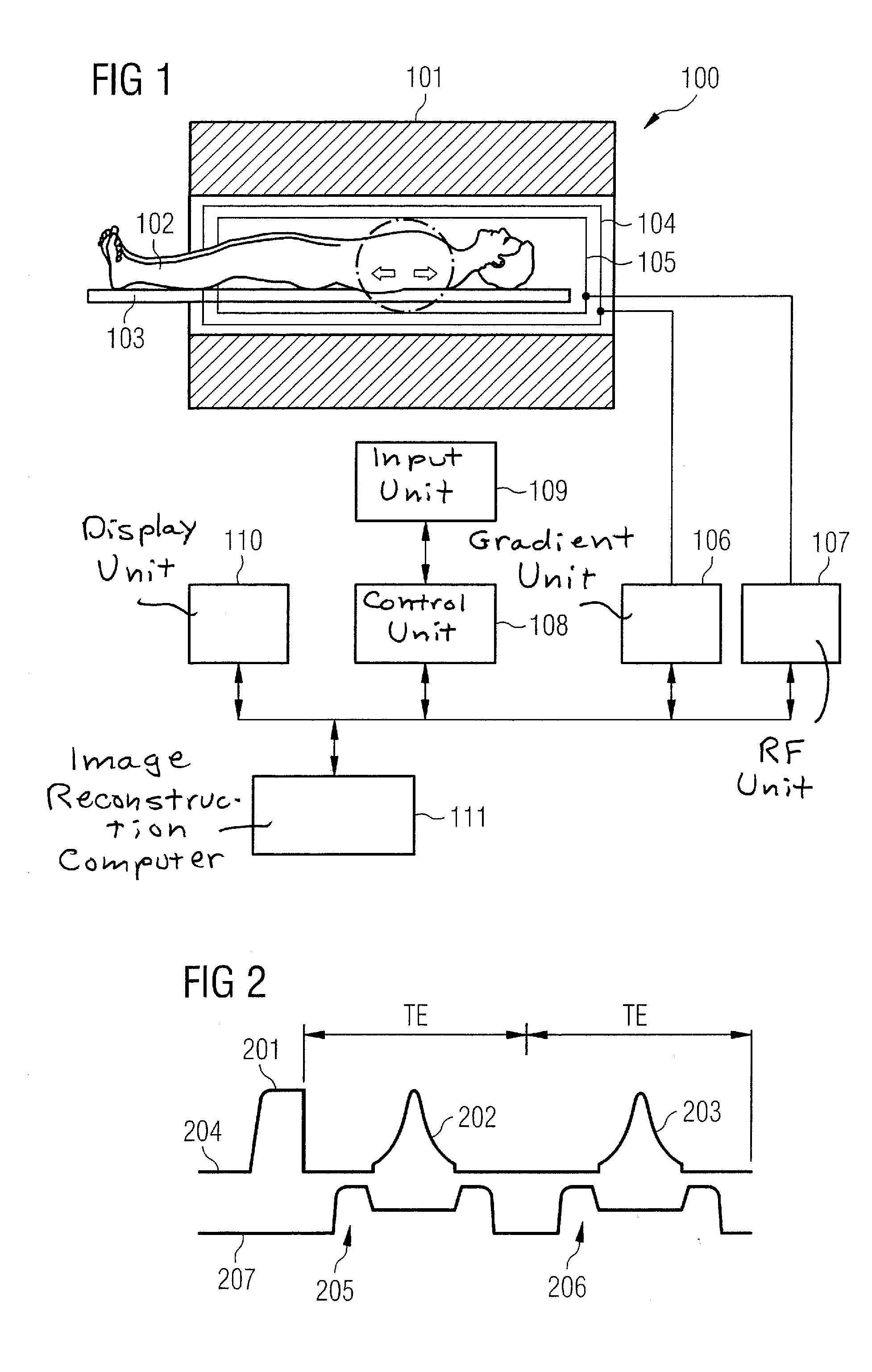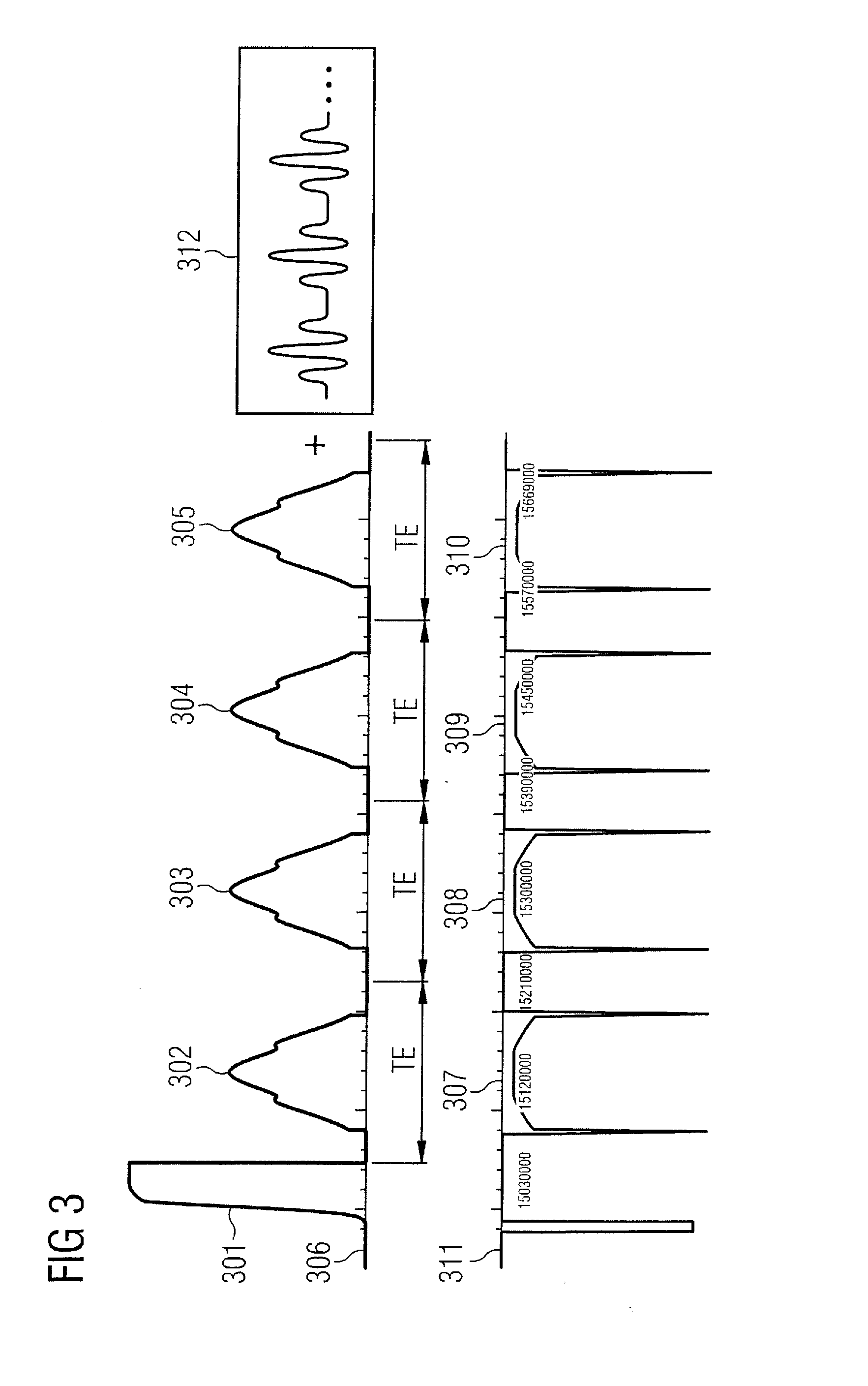[0009]An object of the present invention is to provide a method for generation of an excitation in an examination subject to acquire magnetic resonance signals, that achieves acquisition of magnetic resonance signals with an optimally low background
signal, a low energy injection into the examination subject, and a reduction of the influence of
magnetic field inhomogeneities. Furthermore, it is an object of the present invention to provide a magnetic resonance
system for implementation of such a method.
[0011]In an embodiment of the present invention, after the second adiabatic full-passage pulse at least one third and one fourth adiabatic full-passage pulse are radiated. The time intervals between the second adiabatic full-passage pulse and the third adiabatic full-passage pulse, as well as between the third adiabatic full-passage pulse, and the fourth adiabatic full-passage pulse is at least 75 ms. Signals from tissues over a wide range of T2 relaxation times can be nearly entirely suppressed with such an excitation sequence, for example. A large T2 weighting can in particular be achieved by a relaxation during the
radiation of the adiabatic pulse occurring in addition to a relaxation between the pulses. In a further embodiment, the time interval between two successive adiabatic full-passage pulses is at least 100 ms, advantageously at least 150 ms. A strong T2 weighting can be achieved with such echo times, such that a fluid with a long T2 relaxation time can be imaged with
high contrast with a subsequent imaging sequence. In another embodiment of the present invention, the time interval between successive adiabatic full-passage pulses is established such that the
transverse magnetization after
radiation of the last adiabatic full-passage pulses has already significantly decayed in regions of the examination subject that are primarily composed of tissue. By contrast, the transverse
magnetization re-phases in regions of the examination subject that are primarily composed of fluid, such that a
spin echo magnetic
resonance signal can subsequently be acquired from the regions of the examination subject that primarily comprise fluid. A good contrast between the fluid and the tissue is thus achieved.
[0014]In another embodiment of the present invention, no acquisition of magnetic resonance signals for an imaging ensues during the
radiation of the adiabatic half-passage (AHP) pulse and the adiabatic full-passage (AFP) pulse. For example, tissue or regions of the examination subject with relatively short T2 times can still emit magnetic resonance signals after a radiation of the AHP pulse or the first AFP pulse, which can lead to an increase of the background signals. It is thus advantageous to not acquire any magnetic resonance signals during the radiation of the AHP pulses and the AFP pulses since magnetic resonance signals of regions with short T2 time can thus be further suppressed.
[0018]According to a further embodiment of the invention, the
spin echo magnetic resonance signals in the
phase coding direction are acquired with a
partial Fourier acquisition. Energy injection thus can be further reduced.
[0019]In another embodiment,
spin echo magnetic resonance signals for central k-space lines are acquired following the excitation with adiabatic pulses. For example, a B1 insensitivity can be further improved via an initial acquisition of the central k-space lines. For example, although B1 inhomogeneity effects can occur in the refocusing pulses, the
central region of k-space is less affected by a change of a B1 amplitude, whereby an initial acquisition of the central k-space lines is advantageous.
[0021]According to a further aspect of the present invention, a magnetic resonance system is provided for generation of an excitation in an examination subject to acquire magnetic resonance signals from a region of the examination subject. The magnetic resonance system has a
magnet for application of a primary magnetic field to a region of the examination subject; an RF coil arrangement to radiate RF pulses into a region of the examination subject; and a
control unit. The
control unit controls the radiation of RF pulses such that an adiabatic half-passage pulse for generation of a transversal
magnetization as well as at least one first and one second adiabatic full-passage pulse is radiated to generate a slice-selective rephasing of the transversal magnetization, wherein the time interval between the first adiabatic half-passage pulse and the first adiabatic full-passage pulse is at least 37 ms, and wherein the time interval between the first adiabatic full-passage pulse and the second adiabatic full-passage pulse is at least 75 ms. Such an embodiment of a magnetic resonance system is advantageous since it is suitable for a subsequent acquisition of magnetic resonance signals with
high contrast of regions with long T2 relaxation time relative to regions with short T2 relaxation time, and can achieve a good suppression of background signals and a small introduction of RF energy. The magnetic resonance system is advantageously designed such that it operates according to one or more of the embodiments of the method as described above.
 Login to View More
Login to View More  Login to View More
Login to View More 


